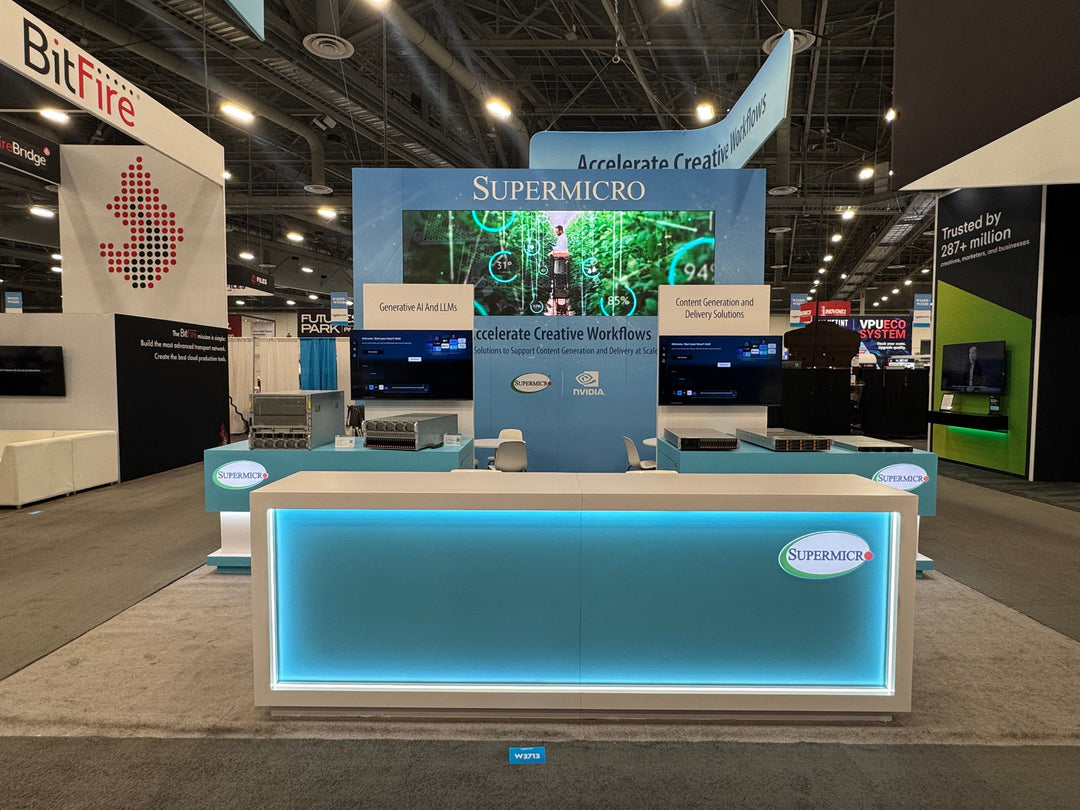Your trade show booth speaks before you do. In a fast-paced environment where attendees are bombarded with visual stimuli and tight schedules, you only have seconds to make a powerful first impression. A well-designed booth doesn’t just look good — it sells — sometimes without the need for a single spoken word.
At KSM Exhibits, we specialize in designing, fabricating, and installing trade show booths that convert passive passersby into curious visitors and ultimately, paying customers. In this guide, we’ll break down how to create a silent-selling booth that commands attention, communicates your value, and draws qualified leads effortlessly.
Why Silent Selling Matters
Trade shows are high-traffic, high-pressure environments. Attendees often walk dozens of aisles and see hundreds of brands. You won’t have the luxury of explaining your pitch to everyone. That’s where “silent selling” — selling through design, structure, and emotion — becomes essential.
A booth that silently sells:
-
Communicates your brand values instantly
-
Demonstrates your product or service benefits visually
-
Builds trust through cohesive, professional design
-
Guides visitors through an intuitive journey
In essence, your booth should function as a salesperson — without needing one.
1. Start With a Clear Brand Message
Your booth must immediately answer the question: What do you do, and why does it matter?
Visual Clarity
Skip the clutter. A clean, minimal layout with one strong message outperforms a busy booth that tries to say too much. Consider a central slogan or benefit-driven statement prominently placed at eye level.
Tip: Use large, legible typography (sans serif fonts are ideal), and place your core value proposition on the highest part of the booth visible from a distance — like a hanging sign or backlit header.
Consistent Branding
Everything from the booth colors and materials to lighting and floor design should align with your brand identity. Consistency reinforces recognition and trust.
Example: If you’re a sustainability-focused company, integrate natural textures, recycled materials, and earth tones throughout your design.
2. Design for Human Psychology
Silent selling works best when you tap into how people think, feel, and behave.
Leverage Color Psychology
Colors evoke emotion and influence decision-making. For example:
-
Red = urgency, energy (good for product launches)
-
Blue = trust, stability (ideal for tech or finance)
-
Green = growth, health (great for sustainability, wellness)
Use a strategic color palette to communicate your booth’s mood and purpose instantly.
Use Strategic Lighting
Lighting draws attention and creates ambiance. Highlight your product displays with spotlights, add backlighting to your logo, or create contrast with LED elements to make specific features pop.
Pro Tip: Use lighting not only to illuminate but to direct the visitor’s gaze.
3. Prioritize Layout and Flow
Booth layout impacts how people engage — and whether they engage at all.
Create an Open, Welcoming Space
Avoid barriers that make your booth feel closed off. Use open corners, inviting signage, and clear sightlines to draw people in.
Consider: An L-shaped or island layout that naturally invites walk-through traffic rather than forcing people to enter a confined space.
Guide the Journey
Once inside, your booth should guide visitors intuitively:
-
Attract with eye-catching visuals at the front
-
Engage with interactive elements in the center
-
Convert with call-to-action areas toward the back
This path mirrors a sales funnel — awareness, interest, decision — without saying a word.
4. Incorporate Interactive, Self-Guided Engagement
People love to explore at their own pace. Give them tools to do so.
Use Digital Displays
Touchscreens, explainer videos, and looping product demos allow visitors to learn about your brand independently.
Example: A touchscreen product selector that lets users input their needs and get personalized suggestions, all without needing a staff member to guide them.
QR Codes & NFC Tags
Smartphones are powerful allies in silent selling. Use QR codes linked to product specs, demo videos, or contact forms.
Tip: Place them in highly visible areas and include a call to action like “Scan to see it in action.”
5. Feature Product Demonstrations Without Staff
Not every booth can afford multiple team members, and some visitors prefer to explore without pressure.
Build Automated Displays
Use motorized platforms, animated models, or looped video walls that showcase how your product works.
Example: A skincare brand might use a rotating display that shows before/after photos alongside ingredients and benefits.
Live Action Zones (Without Salespeople)
Design a demo area where the product can be touched, tried, or viewed in action. For software or service companies, set up a user-friendly demo kiosk with simple instructions and headphones.
6. Emphasize Social Proof Visually
Trust is critical — and best built visually at trade shows.
Highlight Testimonials & Case Studies
Use quote blocks, video loops, or side panels to showcase client testimonials or statistics that prove your value.
Example: “Used by 4 of the top 5 logistics firms — 98% client retention rate.”
Display Awards and Media Mentions
Badges of credibility (awards, certifications, or news features) immediately boost perceived legitimacy.
7. Include a Silent Call to Action
Don’t let visitors leave without knowing what to do next.
Use Visual CTAs
Install visual cues like “Scan to book a demo,” “Try it here,” or “Take one” with brochures, digital freebies, or branded swag.
Offer Takeaway Material
High-quality brochures, business cards, or small sample kits should be easy to grab — no salesperson needed.
Pro Tip: Include a QR code on every handout that leads to a custom landing page to track booth ROI.
8. Keep It Clean, Professional, and Staff-Optional
Even if your staff is delayed or busy, your booth should remain functional and effective.
Ensure Easy Maintenance
Design for minimal upkeep — stain-resistant flooring, self-standing signage, and sturdy build quality mean the booth stays sharp with little effort.
Use Modular, Pre-Programmed Elements
Pre-loaded media on screens, scheduled lighting cues, or automated signage rotation ensure your booth runs smoothly — even without constant supervision.
Real-World Example: KSM Exhibits' Silent-Selling Success
At KSM Exhibits, we recently partnered with a SaaS company that wanted to engage busy tech buyers at CES without relying on in-booth sales staff. We built:
-
A minimalist booth using sharp angles, cool lighting, and motion graphics
-
A massive LED tower looping customer success stories
-
QR-activated demos on tablets mounted at each station
-
Clear messaging banners: “Automate Your Cloud — See How in 60 Seconds”
The result? A 300% increase in leads and a 92% booth dwell time increase compared to the previous year.
Final Thoughts: A Booth That Speaks for Itself
A booth that sells without saying a word isn’t just possible — it’s essential in today’s competitive trade show landscape. By combining strategic design, sensory psychology, and self-guided tech, you create an environment where your brand does the talking — and selling — for you.
Ready to Build a Booth That Sells Itself?
KSM Exhibits specializes in creating high-impact, custom and rental booths that attract, engage, and convert — all without needing to say a word.
👉 Let’s design your silent-selling booth today. Contact us





